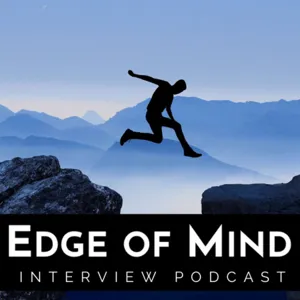MEDITATIONENS RYGRAD | Søren Munk

I denne meditation løfter Søren, ligesom i ’Stille vand – stille sind’ som også ligger i Praksisbiblioteket, en årtusinder gammel meditativ praktik ind i den moderne verden.
Det drejer sig om Shamatha.
Om det ord - som er fra Sanskrit - siger ordbøgerne at det betyder ’bevidsthedsmæssig ro’. At det går tilbage til den helt tidlige buddhismes oprindelige tilgang til meditation.
Og at det som grundøvelse, fortæller Søren her, findes i alle de store spirituelle traditioner.
På en måde er praktikken helt enkelt: Vi fokuserer på åndedrættet og holder opmærksomheden lejret dér.
Det er lettere sagt end gjort.
Når vi, som vi inviteres til her, forsøger at følge selv ret få åndedrag med fuld opmærksomhed, opdager vi at sindet igen og igen distraheres.
Der er så en lettelse her at få fortalt at denne distraktion også har med vores biologi at gøre, med vores nervesystems årvågne uro.
En lettelse at Søren igen og igen peger på den milde overbærenhed med hvilken vi bedst kan opdage vores fravær og fra denne opdagelse føre opmærksomheden og fokus tilbage til åndedrættet.
En del af den måde Shamatha i denne form, i denne guidning, får nutidig friskhed, er ved beskrivelsen af fire trin som vi hjælpes til at tage som en forberedelse til øvelsen – og som en støtte undervejs.
De fire trin handler om: a) motivation, b) om at sætte sig realistiske delmål for øvelsen, c) om hvordan vi bedst får hjælp af vores viljeskræfter – og d) om at vi på forhånd, med selvomsorg, gør os klart at vi uundgåeligt vil møde distraktioner. Og at vi forsøger at forberede os på af hvad art disse kunne tænkes at være – og hvordan vi vil møde dem.
Vi, nutidens mennesker, har, siger Søren, brug for en klarhed over vores motivation til – og vores mål med – at meditere.
Vi har brug for at vores beslutninger er realistiske for at vi kan få også vores nervesystems træghed i forhold til fordybelsens intensivering i tale.
Vi har brug for at forstå hvorfor vi praktiserer, for at vi kan sætte vilje og intention bag vores meditation.
Og til at få hele os selv med i øvelsen, også de dele som elsker at distraheres og ikke ønsker at skulle forholde sig til den energiintensitet som venter når vi nærmer os nuet, kan vi få hjælp ved at have forberedt på de uundgåelige forstyrrelser. Og ved at have besluttet at vi, når vi trækkes ud i små eller store absencer, vil rette kursen op med overbærenhed mod os selv.
Disse fire trin - som her beskrives detaljeret og fra flere sider - er ikke alene anvendelige på meditation. De er, når vi lytter nærmere efter, en strategi som kan være til nytte i forhold til en hvilken som helst vigtig opgave vi har sat os. Fordi de henvender sig til og tager hånd om lovmæssigheder ved den menneskelige bevidsthed.
Trinnene er således ikke alene meditationens rygrad – de kan være hjælp og støtte til enhver beslutning som vedrører vigtige projekter vi ønsker at gennemføre.
Og som vi véd vil kræve vores helhjertede engagement.
Besøg os her:
kontemplation.dk
eller følg os på vores sociale platforme:
Facebook
Instagram
Youtube
Du er velkommen til at skrive til os her:
kontakt@kontemplation.dk



